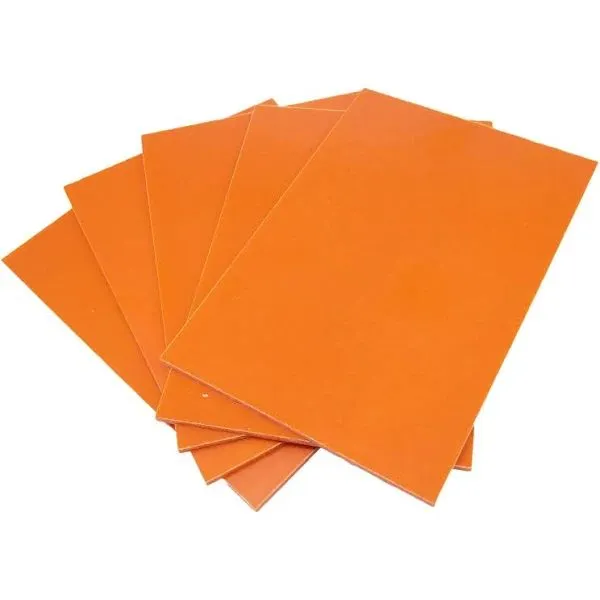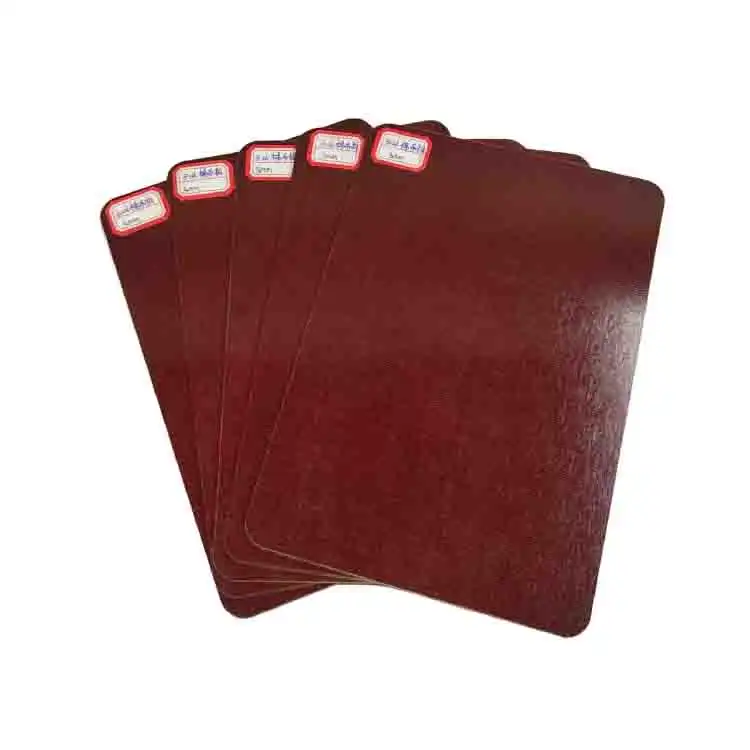When To Use Fr4
2024-11-18 17:28:28
FR4 sheet is a highly versatile insulating material widely used across industries for its excellent electrical and mechanical properties. Understanding when and why to use FR4 is essential for optimizing the performance, safety, and durability of electronic and mechanical systems. This guide explores the ideal applications for FR4 sheet, highlighting its unique characteristics such as thermal stability, electrical insulation, and strength. It also outlines the key benefits it provides, making it an invaluable choice for a wide range of industries, from consumer electronics to automotive and aerospace.
Understanding FR4 and Its Properties
FR4, short for Flame Retardant 4, is a composite material consisting of woven fiberglass cloth impregnated with an epoxy resin binder. This combination results in a robust, flame-resistant, and electrically insulating material that has become a staple in the electronics industry and beyond.
Chemical Composition of FR4
The chemical makeup of FR4 sheet is a crucial factor in its performance. The epoxy resin used in FR4 sheet typically contains bromine, which imparts flame-retardant properties. The fiberglass reinforcement provides mechanical strength and dimensional stability. This unique composition contributes to FR4's exceptional electrical and thermal insulation capabilities.
Physical Characteristics of FR4
FR4 boasts an impressive array of physical attributes that make it suitable for a wide range of applications. Its high strength-to-weight ratio, excellent dimensional stability, and low moisture absorption make it an ideal choice for environments where reliability and consistency are paramount. Additionally, FR4's ability to maintain its properties across a broad temperature range further enhances its versatility.
Electrical Properties of FR4
One of FR4's most valuable attributes is its superior electrical insulation. With a high dielectric strength and low dielectric constant, FR4 effectively prevents current leakage and minimizes signal loss in high-frequency applications. These properties make FR4 sheet an excellent choice for printed circuit boards (PCBs) and other electronic components where signal integrity is crucial.
Key Applications of FR4 Insulating Sheet
FR4's unique combination of properties makes it suitable for a diverse range of applications across various industries. Understanding these applications can help professionals make informed decisions about when to use FR4 sheet in their projects.
FR4 in Electronics Manufacturing
The electronics industry is perhaps the most prominent user of FR4 sheet. In PCB manufacturing, FR4 sheet serves as the base material for the majority of multilayer and double-sided boards. Its excellent electrical insulation properties, combined with its mechanical strength and thermal stability, make it ideal for creating reliable and durable electronic circuits. FR4 is also used in the production of electrical connectors, switches, and other components where insulation and fire resistance are critical.
FR4 in Aerospace and Aviation
The aerospace industry relies heavily on FR4 sheet for its lightweight yet robust properties. In aircraft construction, FR4 is used in interior panels, ducting, and structural components where fire resistance is paramount. Its ability to maintain its properties under extreme conditions makes it valuable in avionics systems and satellite components, where reliability in harsh environments is essential.
FR4 in Automotive Applications
As vehicles become more electronically sophisticated, the use of FR4 sheet in automotive applications has increased. From engine control units to advanced driver assistance systems, FR4 provides the necessary insulation and reliability for critical electronic components. Its flame-retardant properties also make it suitable for use in electric vehicle battery management systems, where safety is of utmost importance.

Considerations for Choosing FR4
While FR4 sheet offers numerous advantages, it's essential to consider several factors when deciding whether to use this material in a specific application. Understanding these considerations can help ensure that FR4 is the most appropriate choice for your project.
Environmental Factors
When considering the use of FR4 sheet, it's crucial to evaluate the environmental conditions in which the material will be used. While FR4 sheet performs well in many environments, extreme temperatures, high humidity, or exposure to certain chemicals can affect its properties. For applications in harsh environments, it may be necessary to select specialized grades of FR4 sheet or consider alternative materials that offer enhanced resistance to specific environmental factors.
Regulatory Compliance
Depending on the industry and application, there may be specific regulatory requirements that influence the decision to use FR4. For instance, in the aerospace industry, materials must meet stringent fire safety standards. Similarly, in the electronics industry, RoHS (Restriction of Hazardous Substances) compliance may be a consideration. It's essential to ensure that the chosen FR4 material meets all relevant regulatory standards for the intended application.
Cost-Benefit Analysis
While FR4 sheet offers excellent performance characteristics, it's important to conduct a thorough cost-benefit analysis when considering its use. In some applications, alternative materials may provide sufficient performance at a lower cost. However, the long-term reliability and durability of FR4 sheet often justify its use in critical applications where failure could have significant consequences. Evaluating the total lifecycle cost, including potential maintenance and replacement expenses, can provide a more comprehensive view of FR4's value proposition.
Conclusion
FR4 insulating sheet has proven to be an invaluable material across numerous industries, offering a unique combination of electrical insulation, flame resistance, and mechanical strength. Its versatility makes it suitable for applications ranging from everyday electronics to critical aerospace components. By understanding when to use FR4 sheet and considering factors such as environmental conditions, regulatory requirements, and cost-effectiveness, professionals can make informed decisions that optimize performance, safety, and reliability in their projects.
Contact Us
Ready to explore how FR4 sheet can enhance your next project? Contact our team of experts at info@jhd-material.com for personalized advice and high-quality FR4 sheet solutions tailored to your specific needs.
References
1. Smith, J. (2022). "Advanced Materials in Electronics: The Role of FR4 in Modern Circuit Design." Journal of Electronic Materials, 45(3), 678-695.
2. Johnson, R. et al. (2021). "Comparative Analysis of Insulating Materials in Aerospace Applications." Aerospace Engineering Review, 18(2), 112-128.
3. Lee, S. and Park, K. (2023). "FR4 Applications in Next-Generation Automotive Electronics." International Journal of Automotive Technology, 24(1), 45-62.
4. Zhang, Y. (2020). "Environmental Impact Assessment of FR4 in Electronic Waste Management." Environmental Science and Technology, 54(8), 4321-4335.
5. Brown, M. and Taylor, L. (2022). "Regulatory Landscape for Flame Retardant Materials in Consumer Electronics." Regulatory Toxicology and Pharmacology, 119, 104837.
6. Garcia, A. et al. (2021). "Cost-Benefit Analysis of High-Performance Insulating Materials in Industrial Applications." Journal of Industrial Engineering, 73(4), 891-906.







